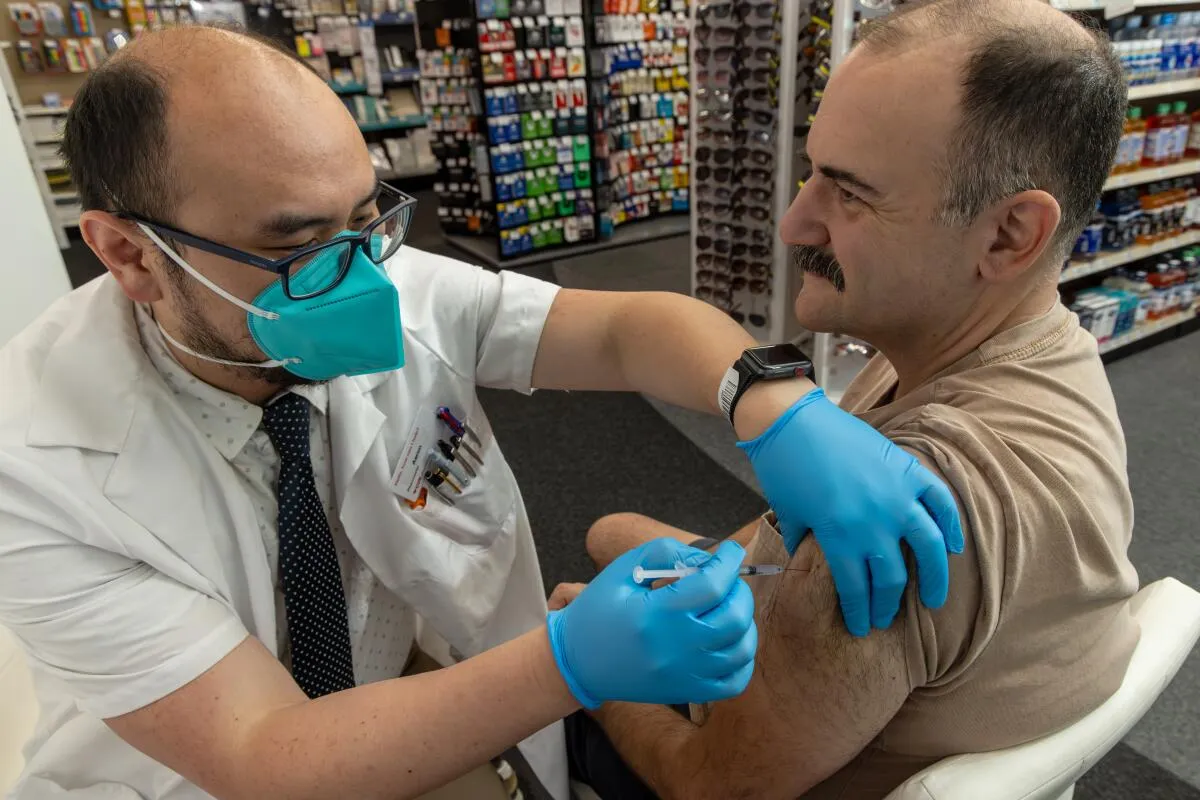A New COVID Subvariant Emerges: Challenges Ahead as Trump Shifts Stance
As summer approaches, health officials are once again on high alert due to the emergence of a new COVID subvariant. First identified in Washington State, this new strain is spreading rapidly, prompting concerns over a potential uptick in cases ahead of the warmer months. This development comes at a time when significant political shifts regarding vaccines and public health messaging are taking place, particularly with former President Donald Trump distancing himself from vaccine advocacy.
The New Variant: What We Know
The latest COVID subvariant, dubbed BA.5.2, is a descendent of the Omicron variant and has been categorized under the umbrella of variants of concern. Health officials are particularly worried about this strain due to its enhanced transmissibility compared to its predecessors.
Studies from early April 2023 indicate that BA.5.2 could spread 30% more easily than the previous dominant strain. Initial case reports show clusters of infections in Washington and adjacent states, raising alarms over its potential to become the new dominant variant in the region.
Symptoms and Response
Symptoms associated with the BA.5.2 variant appear similar to those caused by earlier strains of COVID-19. Patients report experiencing mild to moderate symptoms, which include:
- Cough
- Fatigue
- Headache
- Loss of taste and smell
- Congestion or runny nose
Health officials are urging the public to remain vigilant, emphasizing the importance of vaccination and booster doses. Vaccination remains a critical tool in mitigating severe disease and hospitalizations, especially among vulnerable populations.
Trump’s Pivot on Vaccines
As the new variant raises health concerns, the political landscape regarding vaccines is also shifting, particularly with former President Donald Trump’s recent remarks on the issue. During a recent rally, Trump downplayed the need for vaccinations, advocating for personal choice rather than public health necessity. This pushback against vaccines is notable, especially given his previous administration’s role in fast-tracking vaccine development.
This change in stance could have significant implications for public health messaging and vaccination rates across the nation. Experts warn that politicizing vaccines could deter some from getting vaccinated or boosted, potentially exacerbating the spread of COVID in the wake of new variants.
The Impact of Vaccine Hesitancy
Vaccine hesitancy has enabled numerous variants to emerge, affecting the overall ability to control the virus. The CDC reported that as of late March 2023, roughly 65% of the eligible U.S. population is fully vaccinated, while only 30% have received their recommended booster shots. Low booster uptake is a dire concern as immunity wanes amidst the emergence of new strains.
Public health experts emphasize that communicating scientific information accurately and effectively is crucial in combating misinformation and encouraging booster uptake. With significant political figures undermining the importance of vaccination, continued educational efforts are imperative.
What to Expect This Summer
Given the rise of the BA.5.2 variant, experts predict that the summer months may see an increase in COVID-19 cases. The scenario suggests a repeat of previous summers where variants gained traction.
“Increased community spread during warmer months could put pressure on hospitals, especially with regard to ICU capacity. We must remain vigilant, keep our communities informed, and encourage individuals to get vaccinated if they haven’t already done so,”“ warns Dr. Eva Sanchez, an epidemiologist at the University of Washington.
Preventive Measures
As we navigate the complexities of a new COVID subvariant and changing public health messages, adherence to preventive measures is essential. Key actions to consider include:
- Vaccination: Stay updated on vaccination and booster eligibility. Consult local health authorities for guidance.
- Masking: In crowded places or instances of high transmission, wearing masks can help curb the spread.
- Testing: Regular testing remains advantageous, especially if symptoms appear or after potential exposure.
- Hygiene: Practice good hand hygiene, including frequent handwashing and the use of hand sanitizer.
With the presence of the BA.5.2 variant and public discourse altered, collective responsibility is integral in navigating these challenges. It’s not merely a personal choice; it’s a public health imperative. Each individual’s actions impact their community’s health, underscoring the necessity for unified efforts in combating COVID-19 as we brace for potential increases in case numbers this summer.
Looking Forward
The new COVID subvariant presents us with a reminder of the ongoing battle against the virus and its continuously evolving nature. While we face these public health challenges, it’s crucial to reassess our collective approach to vaccinations, misinformation, and preventive measures. By recognizing the importance of solidarity in public health efforts, we can work towards safeguarding our communities against future outbreaks.
In summation, the emergence of the new COVID subvariant BA.5.2 in Washington State signals a need for renewed vigilance. As summer approaches and political narratives shift away from vaccines, public health officials continue to advocate for vaccinations to maintain control over pandemic outcomes. The combination of a proactive public health strategy and community-wide commitment to preventive practices holds the key to navigating the challenges ahead in our ongoing fight against COVID-19.







